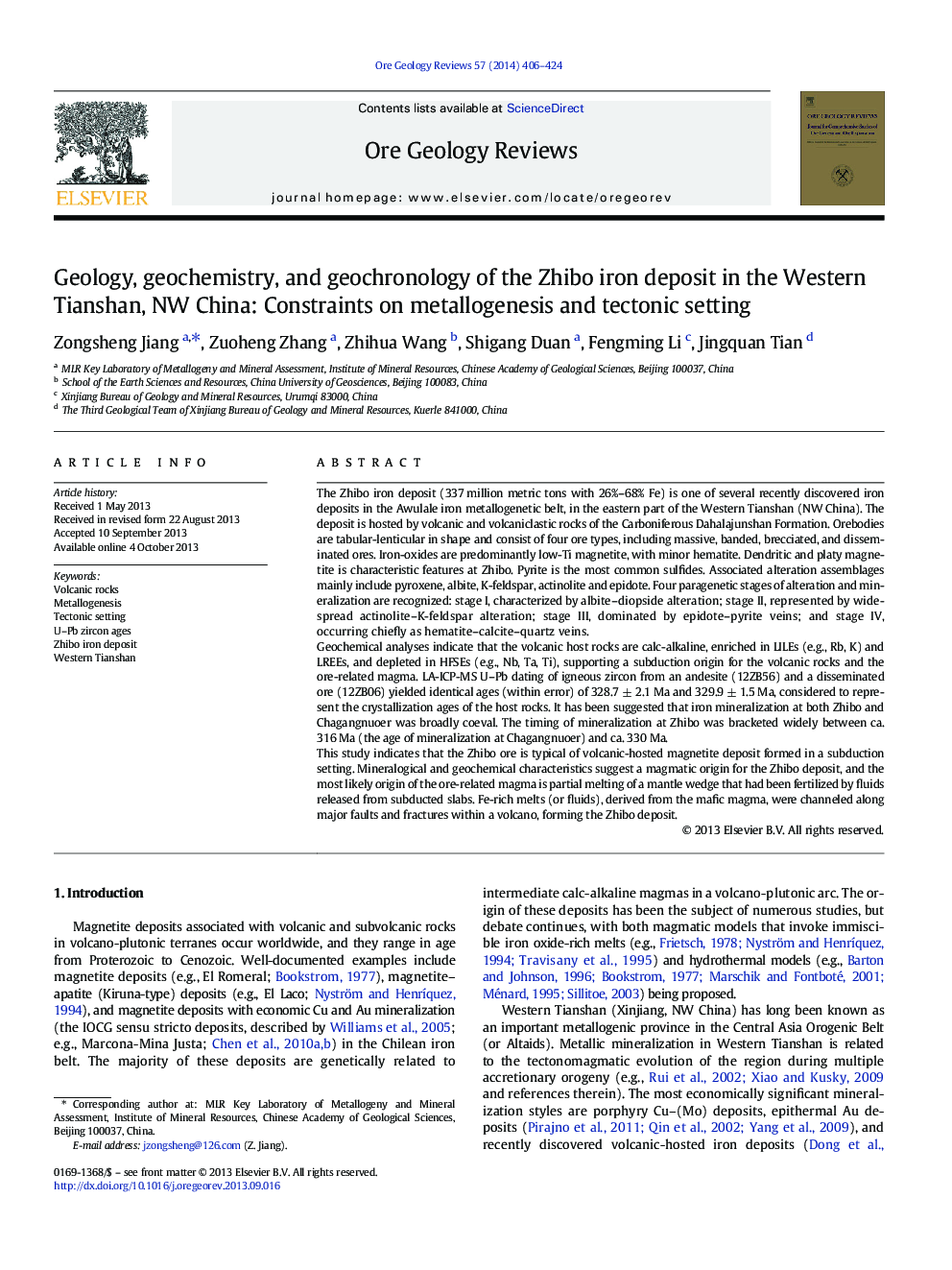| کد مقاله | کد نشریه | سال انتشار | مقاله انگلیسی | نسخه تمام متن |
|---|---|---|---|---|
| 4697517 | 1637246 | 2014 | 19 صفحه PDF | دانلود رایگان |
• The Zhibo iron deposit is a typical volcanic-hosted magnetite deposit.
• The deposit is considered to be of magmatic origin formed in a subduction setting.
• The age of iron mineralization is broadly bracketed between 316 Ma and 330 Ma.
The Zhibo iron deposit (337 million metric tons with 26%–68% Fe) is one of several recently discovered iron deposits in the Awulale iron metallogenetic belt, in the eastern part of the Western Tianshan (NW China). The deposit is hosted by volcanic and volcaniclastic rocks of the Carboniferous Dahalajunshan Formation. Orebodies are tabular-lenticular in shape and consist of four ore types, including massive, banded, brecciated, and disseminated ores. Iron-oxides are predominantly low-Ti magnetite, with minor hematite. Dendritic and platy magnetite is characteristic features at Zhibo. Pyrite is the most common sulfides. Associated alteration assemblages mainly include pyroxene, albite, K-feldspar, actinolite and epidote. Four paragenetic stages of alteration and mineralization are recognized: stage I, characterized by albite–diopside alteration; stage II, represented by widespread actinolite–K-feldspar alteration; stage III, dominated by epidote–pyrite veins; and stage IV, occurring chiefly as hematite–calcite–quartz veins.Geochemical analyses indicate that the volcanic host rocks are calc-alkaline, enriched in LILEs (e.g., Rb, K) and LREEs, and depleted in HFSEs (e.g., Nb, Ta, Ti), supporting a subduction origin for the volcanic rocks and the ore-related magma. LA-ICP-MS U–Pb dating of igneous zircon from an andesite (12ZB56) and a disseminated ore (12ZB06) yielded identical ages (within error) of 328.7 ± 2.1 Ma and 329.9 ± 1.5 Ma, considered to represent the crystallization ages of the host rocks. It has been suggested that iron mineralization at both Zhibo and Chagangnuoer was broadly coeval. The timing of mineralization at Zhibo was bracketed widely between ca. 316 Ma (the age of mineralization at Chagangnuoer) and ca. 330 Ma.This study indicates that the Zhibo ore is typical of volcanic-hosted magnetite deposit formed in a subduction setting. Mineralogical and geochemical characteristics suggest a magmatic origin for the Zhibo deposit, and the most likely origin of the ore-related magma is partial melting of a mantle wedge that had been fertilized by fluids released from subducted slabs. Fe-rich melts (or fluids), derived from the mafic magma, were channeled along major faults and fractures within a volcano, forming the Zhibo deposit.
Journal: Ore Geology Reviews - Volume 57, March 2014, Pages 406–424
